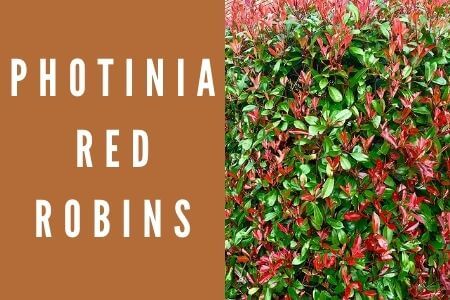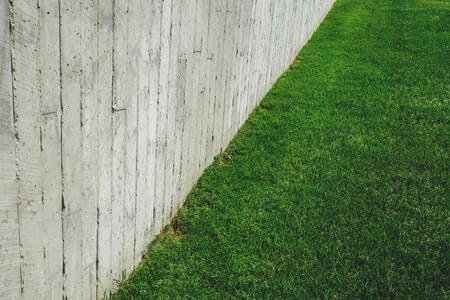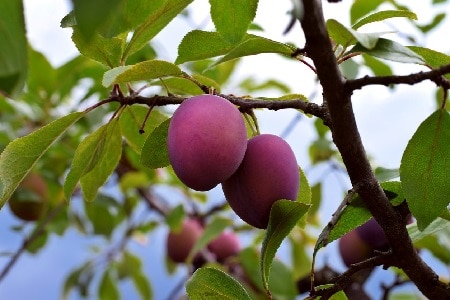Photinia x Fraseri ‘Red Robin’ is the most popular Photinia by far. The shrub was first discovered as a seedling in 1943 at Fraser Nurseries, Birmingham Alabama and named after its founder J W Fraser who began growing deciduous plants for the market from 1916 onwards. It is thought to have been bred somewhere in New Zealand where it continues to be grown today on a large scale with more than 40% of all Photinias planted being Red Robins.
The technical name for this shrub is Photinia x Fraseri ‘Red Robin’.
As a group, photinias are native to North America and Asia but they’re also cultivated widely throughout Europe especially England’s mild climate areas.
The Red Robin Photinia is known for its bright red leaf shoots and white panicles. It’s a stunning addition to any yard, but it scores with an undemanding nature that makes it ideal for areas of the country which are not too harsh on trees during winter months.
Photinia Red Robins Profile
- plant family: Rose family (Rosaceae)
- sub-tribe: Stone fruit (Pyrinae)
- name of genus: Photinia
- native in Asia, mainly in China
- popular hybrid: Red Robin (Photinia fraseri)
- evergreen shrub or small tree
- plant height of 200 to 350 cm
- elliptical, glossy green leaves with red shoots
- white panicles from May to June
- small red berry fruits in autumn
This shrub is not very popular because it’s grown so widely throughout gardens everywhere. However, the Royal Horticultural Society recognizes that this plant has a lot to offer and giving it the highest award for being useful in garden design – the AGM (Award of Garden Merit).
The photinia’s bright red leaf shoots give modern accents to garden designs in spring. When it wears its white dress of flowers and berry fruits, many gardeners fall in love with it.
The apple-shaped fruits remain on the Photinia well into winter and are well sought after by birds. The slightly poisonous berries, however, aren’t suitable for human consumption.
Caring for Photinia Red Robins
A successful Red Robin garden consists of three key factors: location, water and nutrients, and pruning. Anyone can create a good-looking plant with the right setup in place!

The process for growing beautiful red robins begins by finding an ideal spot that gets ample sunlight throughout most days during spring through fall – this is when they produce their flowers. Next, you must ensure your plants are getting enough moisture to support healthy growth; this means keeping them well-watered but not wet or soggy at all times so as not to rot roots/stems).
Last but definitely not least it’s time for some controlled cutting back (shearing) which will allow more light into the center of each branch where new flower stems form.
Planting New Red Robins
The steps below will ensure your Photinia Red Robin is correctly planted.
- When planting, make sure to choose a full sun or partial shade position. Since the plant needs some air circulation it’s best if you don’t plant it in any tight spaces with walls or fences nearby since that could cause moisture build-up and damage the leaves of this delicate plant.
- Get your soil tested to see what the pH is. If it’s acidic, add some lime or wood ash in autumn and dig them into the ground at least 6 inches deep before planting anything else. A garden with a well-drained area will need plenty of compost added to it.
- This shrub can be planted all year long if the soil is not frozen and you can water well when conditions are dry. The soil should be well-drained and preferably sandy. March through April or September through October are the best times to purchase these plants, as they will have enough water during dry months without being planted too early in cold weather conditions.
- Place the plant into its new home, filling it with soil so that it is at the same depth as was in the pot. Fill around your rootball and firmed down gently but firmly on top of this ground. Water well to settle everything back into place after you have finished moving or replanting it.
When grown against a wall or fence, individual plants should be at least 60cm / 2ft from the wall or fence. When growing as a hedge, individuals plants should be about 75cm (2ft 6in) apart for quick and dense growth.
Pruning Red Robins
Red Robins grow quickly, reaching a height of 400 cm and a width of 300 cm in just a short time. It gets bare from below the top with dense leaves that make it look amazing.
The frequency of pruning depends on the shape and size you want the plant to grow into. Without this process, the Red Robin plant will grow happily with no limitations forming a bush around 13 feet high after 7 years or so.
Cutting back the photinia every year prevents undesirable new shoots from developing. Its good tolerance means you don’t have to worry about spraying chemicals or other potentially harmful treatments on your garden plants.
To get the best results, prune your roses in early-mid June when their flowers are beginning to die. Pruning at this time ensures that you will have blooms again next year!
Cut flowers can be a nice addition to your house plant arrangements. The red leaves from the Red Robin are an ideal filler for cut flower bowls and vases as well, making them stand out more beautifully against their vibrant color.
Diseases Affecting Red Robins
The red robin is a healthy plant, rarely being attacked by pests. However, they are weak to leaf spot problems- diseases like Venturia cause unhealthy discoloured leaves which turn browner and dry before falling off. Household remedies aren’t effective when there’s an infestation of the disease.
If you get an infestation, the priority should be to cut out all infected plant parts and dispose of them. Then use a fungicide that is approved for use in house gardens and allotments.






